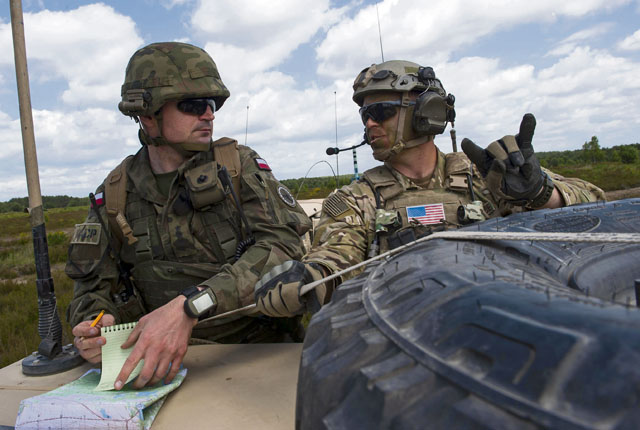
SWIDWIN, Poland — A joint, multinational event took place from June 7 to today with service members participating from 24 nations, including the U.S., Turkey, Finland, Bulgaria, the U.K., Spain and more.
The objective of the exercise is to conduct complex training events, such as multinational air assault and airborne operations, air defense operations and bridging operations to improve cooperative abilities and demonstrate U.S. commitment to regional security.
According to Airman 1st Class Daniel Musso, 4th Air Support Operations Squadron joint terminal attack controller, participating in such large-scale exercises is important for him and his wingmen to stay on top of their game.
“We are here in Swidwin, Poland, assisting the Polish military with Anakonda 2016 while also supporting the 173rd Airborne Brigade’s mission as well,” Musso said. “Here, we’ve been getting to work with joint (attacks) observers. We’re getting some valuable training with them we wouldn’t normally get.”
Anakonda 2016 is based on a combined-threat structure, in which forces participating in this event can expect to train for both conventional and nonconventional forces as well as criminal elements.
The exercise is not only a way for service members to test and develop their job skills, but it also displays the capability that the U.S. has to enable and execute a full range of military missions with its allies to support Europe.
Musso believes these efforts are embodied by the service members working with their European allies.
“It’s important that we continue to do these exercises on this scale with so many of our allies,” Musso said. “We all need to come together with all of our individual tactics and training we’ve had over our careers and collectively bring them together.”
Anakonda 16 involves more than 25,000 participants, with approximately 12,000 U.S. Soldiers. The exercise reinforces the United States’ commitment to Poland and its Baltic allies.
According to Capt. Jacob Hoffman, Polish army JTAC, one of the many important aspects of the event is testing his ability to communicate with so many other nations’ service members.
“In an air traffic control tower, English is the only language someone can communicate to other planes with,” Hoffman said. “This exercise helps me by making me test my English with so many other people.”
The U.S. has participated in this exercise since 2012, with each year seeing participation growing in size and scope.
As the U.S. European Command commander, Gen. Philip M. Breedlove, said in his February 2016 posture statement, “We cannot overemphasize how important European nations, in particular our North Atlantic Treaty Organization allies and non-NATO partners, are to ensuring America’s security and safety.”







